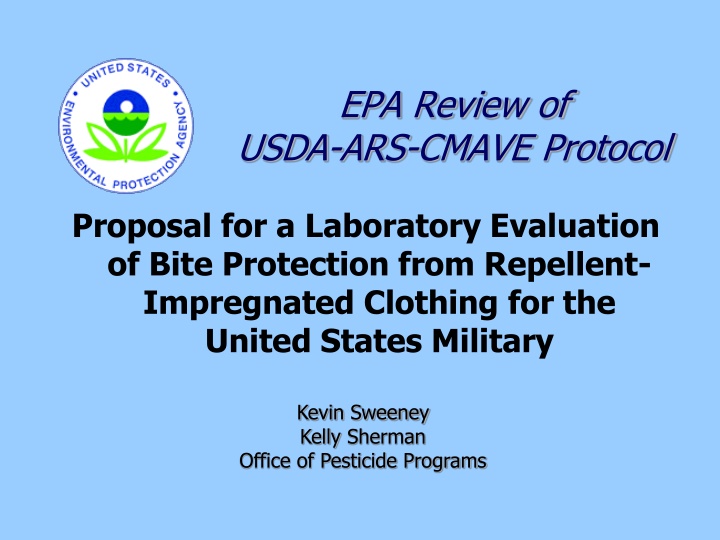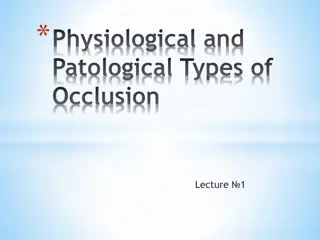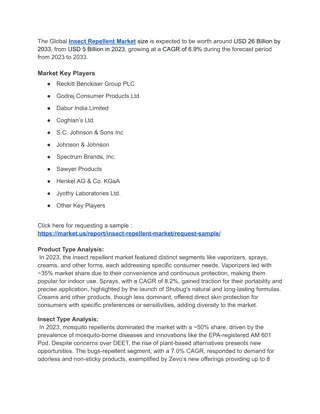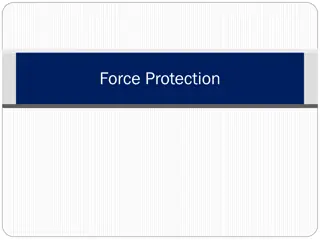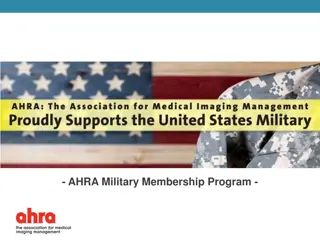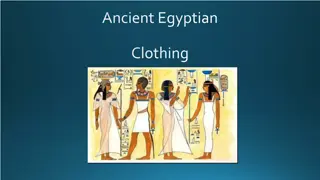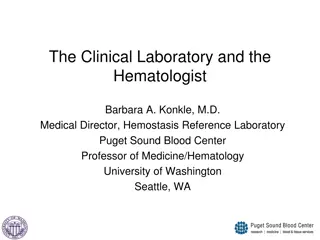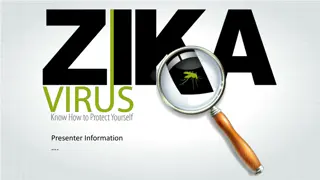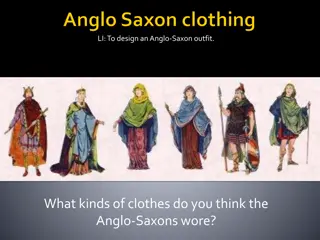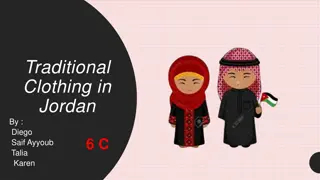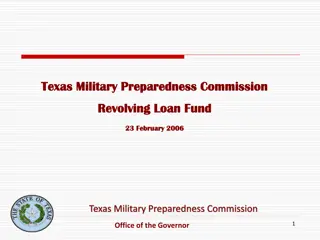Laboratory Evaluation of Bite Protection from Repellent-Impregnated Clothing for the Military
The study protocol outlines a laboratory evaluation of the efficacy of etofenprox-treated military uniforms in providing bite protection against mosquitoes. The research aims to standardize the experimental approach for assessing repellent-treated textiles, particularly focusing on the performance of Fire Resistant Army Combat Uniforms (FRACUs) after multiple wash cycles. The study is crucial for meeting EPA registration requirements and testing the hypothesis that etofenprox treatment offers mosquito bite protection compared to untreated fabric.
Download Presentation

Please find below an Image/Link to download the presentation.
The content on the website is provided AS IS for your information and personal use only. It may not be sold, licensed, or shared on other websites without obtaining consent from the author.If you encounter any issues during the download, it is possible that the publisher has removed the file from their server.
You are allowed to download the files provided on this website for personal or commercial use, subject to the condition that they are used lawfully. All files are the property of their respective owners.
The content on the website is provided AS IS for your information and personal use only. It may not be sold, licensed, or shared on other websites without obtaining consent from the author.
E N D
Presentation Transcript
EPA Review of USDA-ARS-CMAVE Protocol Proposal for a Laboratory Evaluation of Bite Protection from Repellent- Impregnated Clothing for the United States Military Kevin Sweeney Kelly Sherman Office of Pesticide Programs 1
Overview Protocol for a laboratory study of the repellent efficacy of military uniforms containing 1% etofenprox Submitted by Dr. Ulrich Bernier, United States Department of Agriculture, Center for Medical, Agricultural, and Veterinary Entomology Protocol is a special study, non-EPA guideline, that is not similar to previous mosquito field studies reviewed by the HSRB 2
Overview 2 Research is proposed to satisfy EPA registration requirements This protocol and subsequent study may be used to standardize the experimental approach to evaluating the efficacy of repellent treated textiles 3
Overview 3 Sponsor will test the hypothesis that etofenprox treatment provides bite protection when mosquitoes are exposed to treated fabric compared to an untreated control Etofenprox is recommended by the World Health Organization for use in public health vector control programs as a direct spray to infested areas or indirectly by treating fabrics, such as mosquito nets 4
Comparisons to Skin-Applied Repellent Studies Reviewed by the HSRB Laboratory vs. Field Different repellent effect Different efficacy measures Subjects will receive mosquito bites 5
Science Assessment: USDA-ARS Protocol for a Laboratory Evaluation of Bite Protection from Repellent-Impregnated Clothing for the United States Military Kevin Sweeney Registration Division Office of Pesticide Programs 6
Study Objectives This study is designed to determine the bite protection level of etofenprox-treated U.S. Military Fire Resistant Army Combat Uniforms (FRACUs) treated initially at an application rate of 1% wt/wt, and to assess the bite protection performance after 0x, 20x, and 50x washes. 7
Study Objectives 2 The results of this research will allow for determination of whether etofenprox-treated FRACUs meet the Department of Defense s specifications for minimum bite protection level. The research has societal value because U.S. military personnel serving domestically and abroad are at risk of contracting insect- transmitted diseases. 8
Study Objectives 3 Bite Protection Specifications (%) Uniform 0x wash cycle 20x wash cycle 50x wash cycle Army FRACUs (test material in the proposed protocol) 85% 80% 70% 9
Acute Toxicity of the Test Material Acute Dermal = LD50 >2,100 mg/kg body weight Acute oral = LD50 >5,000 mg/kg body weight Minimally irritating to the skin and eyes Not a skin sensitizer 10
MOE Estimate Estimated maximum dose = based on the assumption of 100% etofenprox absorption from 6 treated sleeves = 635.4 mg/subject Assuming 70 kg subject, equivalent dose rate is 635.4/70 = 9.08 mg/kg Margin of Exposure (MOE) = 231 EPA s Level of Concern > 100 11
Evaluating Skin Irritation Dermal observations resembling skin irritation were observed in a previously conducted 28-day dermal toxicity study with technical etofenprox on rabbits The etofenprox registrant, Mitsui Chemicals, will soon be conducting a product-specific 28-day dermal toxicity study in rabbits with etofenprox-treated fabric 12
Experimental Design Testing Paradigm for each Mosquito Species Subject Right Arm Subject Left Arm Test Set Treatment Condition Specimen Treatment Condition Specimen Coat Untreated Unwashed Control Coat Treated Washed 50x Coat Treated Washed 20x Coat Treated Unwashed (0x) Trouser Untreated Unwashed Control Trouser Treated Washed 50x Trouser Treated Washed 20x Trouser Treated Unwashed (0x) 1 Sleeve 1 Sleeve 2 2 Sleeve 3 Sleeve 4 3 Sleeve 5 Sleeve 6 4 Sleeve 7 Sleeve 8 13
Experimental Design 2 Total Replicates per Fabric Type 16 Number of Fabric Specimens Number of Subjects Number of Species Fabric and Treatment Condition Coat Untreated Unwashed Control 1 8 2 Coat Treated Washed 50x 1 8 2 16 Coat Treated Washed 20x 1 8 2 16 Coat Treated Unwashed (0x) 1 8 2 16 Trouser Untreated Unwashed Control 1 8 2 16 Trouser Treated Washed 50x 1 8 2 16 Trouser Treated Washed 20x 1 8 2 16 Trouser Treated Unwashed (0x) 1 8 2 16 14
Experimental Design 3 The test cages are approximately 59,000 cm3 in volume and each will contain 175 to 225 female mosquitoes (density of ~1 mosquito/300 cm3) Female mosquitoes will be preselected from stock cages by using a specially designed draw box that uses odors from the hand of a laboratory staff person to attract mosquitoes upwind in to a trap 15
Endpoints and Measures Unit of measure for determination of the repellent effects is percent bite protection Presence of blood in the mosquito s abdomen will confirm a mosquito bite For each test set, the treatment % bite values will be corrected to account for the bite through values in the untreated control using Abbott s Formula 16
Endpoints and Measures 2 Percent bloodfed in untreated control treatment after test interval Percent bloodfed in etofenprox treatment after the test interval 17
Endpoints and Measures 3 Percent Bite Protection = [1 (treatment rate) / (control rate) ] 100% Treatment rate (or proportion) = (# bloodfed female mosquitoes after test interval) / (total # of female mosquitoes after test interval) ~~when subject used treated fabric~~ Control rate (or proportion) = (# bloodfed female mosquitoes after test interval) / (total # of female mosquitoes after test interval) ~~when subject used untreated fabric~~ 18
Statistical Analysis Plan The objective is to estimate the mean level of bite protection and associated 95% confidence intervals for different treatments [i.e. different combinations of fabric types (coats and trousers), number of washes, and mosquito species]. 19
Statistical Analysis Plan 2 Table 3.5.1 Impact of the Number of Replications on the Number of Subjects True bite-through rate for control fabric ( C) True bite protection for treated fabric ( T) Number of Subjects 50% 20% 80% 95% 80% 95% Expected half-width of a 95% confidence interval for % bite protection 2.7% 8.8% 2.3% 7.5% 2.0% 6.7% 1.9% 6.0% 1.7% 5.6% 1.6% 5.2% 1.5% 4.9% 1.4% 4.7% 1.2% 3.8% 1.0% 3.3% 3 4 5 6 7 8 9 10 15 20 5.2% 4.5% 4.0% 3.7% 3.4% 3.2% 3.0% 2.8% 2.3% 2.0% 4.5% 3.8% 3.4% 3.0% 2.8% 2.6% 2.4% 2.3% 1.9% 1.3% 20
Statistical Analysis Plan 3 The proposed sample size of 8 subjects represents a reasonable compromise between decreasing confidence interval width and limiting unnecessary human experimentation. 21
Statistical Analysis Plan 4 Data Analysis The numbers of bloodfed and total female mosquitoes found with treated and control fabric for each subject will be analyzed as binomial distributed data in a generalized linear model (GLiM) using a log link. 22
Measures to Ensure Reliability Standard Operating Procedures (SOPs) will be in place that must meet Good Laboratory Practices requirements. Subjects attractiveness to mosquitoes will be determined prior to testing Laboratory technicians will assist subjects with placing the test sleeves on their arms and excluding all exposed skin from mosquito exposure. Laboratory technicians will assist subjects with insertion and removal of their arms in/from the cages. Counts of bloodfed mosquitoes and the total number of mosquitoes in the cage will be determined by a research technician. 23
Compliance with Scientific Standards The following elements are adequately addressed: Available toxicity studies with etofenprox Adequately characterize toxicological profile of the formulation except for dermal irritation from intermediate exposures to treated fabric. Support estimate of acceptable Margin of Exposure (MOE) 24
Compliance with Scientific Standards The following elements are generally acceptable but require refinement and clarification: Experimental design Statistical analysis 25
Science Comments and Recommendations Conduct a product-specific 28-day dermal toxicity study in rabbits with etofenprox- treated fabric EPA recommends that the proposed efficacy study not be conducted until the results of the product specific dermal toxicity study have been submitted to and reviewed by EPA 26
Science Comments and Recommendations 2 Provide justification for testing two vector mosquito species instead of three Consider recruiting more than two alternates The statistical plan for analyzing the data will need to take into account how alternate subjects will be handled 27
Science Comments and Recommendations 3 Please add more details to the protocol about what will happen if a subject withdraws midway through the study and an alternate is brought into the study as a replacement. Will an alternate who replaces an original subject complete all eight pairs of sleeves, or only the pairs of sleeves that were not completed by the original subject? 28
Science Comments and Recommendations 4 The subjects and alternates need to be randomly selected from a larger pool of qualified potential subjects. Please continue screening respondents to the advertisement until you have at least 20 qualified potential subjects. Then, randomly select the 8 subjects and 2 or more alternates from the pool of qualified potential subjects. 29
Science Comments and Recommendations 5 Please address the distribution of male and female subjects and discuss if this will impact the results due to differences, if any, in attractiveness to mosquitoes. Please revise the protocol to specify exactly what will happen if there is unequal distribution or if only one sex is represented. 30
Science Comments and Recommendations 6 The statistical analysis used to analyze the study data should be justified in the final report. Describe how the data will be analyzed if the number of test subjects at the end of the test is less than eight. 31
Ethics Assessment USDA Protocol: Laboratory Evaluation of Bite Protection from Repellent-Impregnated Clothing for the United States Military Kelly Sherman Office of the Director Office of Pesticide Programs 32
Value to Society Proposed study would test the repellent efficacy of FRACU material that has been treated with etofenprox Would allow for a determination of whether etofenprox-treated FRACUs meet DoD s specifications for minimum bit protection level Could allow for better protection of US forces serving abroad 33
Subject Selection Subjects will be recruited through an advertisement placed in a newspaper and posted on university bulletin boards Callers will be informed about the study using an IRB-approved script Callers will be screened for eligibility and then scheduled for informed consent meetings 34
Subject Selection 2 Inclusion/Exclusion criteria are complete and appropriate, except: Add exclusion for individuals known to be sensitive to pesticides or other chemical products Add exclusion for individuals with cuts, scrapes or skin conditions on their hands or forearms 35
Subject Selection 3 No potential subjects will be from a vulnerable population Subjects will be recruited through an advertisement printed in a local newspaper and posted on university bulletin boards 36
Consent Process Study Director meets individually with each interested candidate Confirms eligibility criteria Provides detailed explanation of the procedures of the study Shows DVD further explaining testing process Informs candidate of how many mosquito bites they are likely to obtain Reviews Informed Consent Document Answers questions Study Director confirms understanding and solicits consent to participate 37
Risks and Risk Minimization Four categories of risk; protocol provides appropriate measures to minimize each Exposure to biting mosquitoes Possible exposure to arthropod-borne disease Exposure to test material Breach of privacy (pregnancy testing) 38
Benefits No direct benefit to subjects Primary direct beneficiary is sponsor If the treated materials are proven effective and superior to existing materials, indirect beneficiaries will include US military personnel who wear this etofenprox-treated FRACUs 39
Risk:Benefit Balance Risks have been effectively minimized Risks are reasonable in light of the expected societal benefits of the knowledge likely to be gained 40
Respect for Subjects Effective methods for protecting subjects privacy Proposed level of compensation is appropriate Subjects will be free to withdraw at any time Medical care for research-related injuries will be provided at no cost to subjects 41
Independent Ethics Review The Western Institutional Review Board (WIRB) reviewed and approved the protocol and informed consent materials 42
Revisions Requested by EPA Before Research Proceeds Minor clarifications to protocol and consent form as detailed on pg. 4-5 of EPA Review Explain process for inspection of subjects hands and arms Resolve inconsistency re what member of the research team will verify pregnancy test results Clarify that there are no benefits to subjects Add exclusion for people sensitive to pesticides or chemical products Add exclusion for cuts, scrapes, skin conditions on hands or forearms 43
Compliance with Ethical Standards All requirements of 26.1111, 26.1116, and 26.1117 are met All requirements of 26.1125 are met Requirements of 26.1203 are met If EPA s and HSRB s requested corrections are made, research conducted according to this protocol will likely meet the applicable requirements of 40 CFR part 26, subparts K and L 44
Charge Questions If the proposed protocol is revised as suggested in EPA s review and if the research is performed as described: Is the protocol likely to generate scientifically reliable data, useful for estimating the level of mosquito bite protection provided by two different textiles treated with etofenprox? Is the research likely to meet the applicable requirements of 40 CFR part 26, subparts K and L? 45
